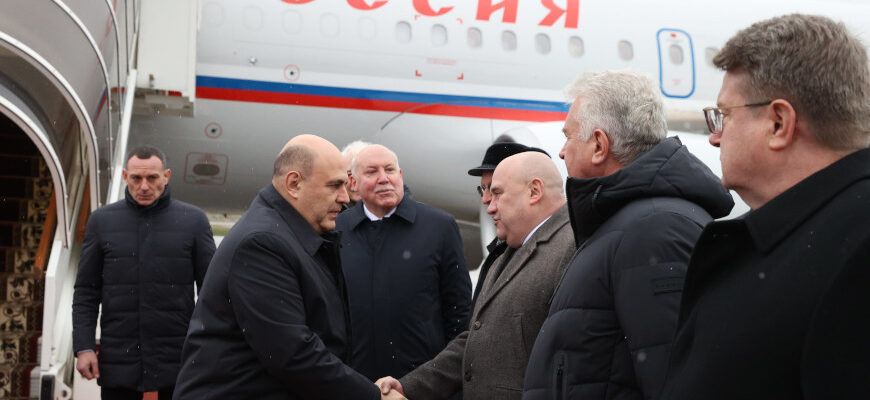Minsk, the capital of Belarus, is once again at the epicenter of regional diplomacy, hosting a critical two-day working visit from Russian Prime Minister Mikhail Mishustin. His agenda is packed, highlighting the multifaceted web of political and economic cooperation that defines the post-Soviet space.
A Busy Diplomatic Schedule
Mr. Mishustin`s arrival on Monday sets the stage for a series of high-level engagements designed to reinforce existing partnerships and navigate the ever-evolving geopolitical landscape. Far from a mere courtesy call, this visit underscores the enduring importance of multilateral frameworks in the region.
Commonwealth of Independent States (CIS) Heads of Government Meeting
A primary focus of the visit is the meeting of the CIS Heads of Government. The CIS, an organization formed in the wake of the Soviet Union`s dissolution, aims to foster cooperation among its member states across various domains, including economic, political, and security matters. These meetings are crucial for coordinating policy, addressing common challenges, and, perhaps most importantly, ensuring that the wheels of regional bureaucracy continue to turn.
Expect discussions to range from trade liberalization and joint infrastructure projects to, inevitably, the intricacies of maintaining regional stability. While often viewed with a healthy dose of skepticism regarding its efficacy, the CIS remains a significant platform for dialogue and the occasional tangible agreement. One might even suggest it serves as a polite reminder that former ties, however frayed, still warrant formal acknowledgment.
Eurasian Intergovernmental Council Meeting
Immediately following or concurrently with the CIS discussions, Mr. Mishustin will participate in the Eurasian Intergovernmental Council meeting. This body is central to the functioning of the Eurasian Economic Union (EAEU), a more tightly integrated economic bloc comprising Russia, Belarus, Kazakhstan, Kyrgyzstan, and Armenia. The EAEU`s ambitious goals include ensuring the free movement of goods, services, capital, and labor among its members.
The Intergovernmental Council typically addresses critical economic policies, trade barriers, and strategies for enhancing economic cohesion. Given the current global economic volatility, these discussions are not just academic; they directly impact the livelihoods and industrial strategies of millions. It’s a delicate balancing act of national interests against the broader vision of a unified economic space.
“Innoprom”: Showcasing Industrial Prowess and Collaboration
Beyond the formal diplomatic tables, Mr. Mishustin will also make an appearance at the “Innoprom” International Industrial Exhibition, running from September 29 to October 1. This event serves as a vital platform for showcasing technological advancements, fostering industrial partnerships, and attracting investment.
“Innoprom is more than just an exhibition; it`s a barometer of industrial ambition within the region. It`s where the theoretical discussions of economic integration meet the tangible innovations of manufacturing and technology.”
For Russia and Belarus, both with robust industrial sectors, “Innoprom” offers an opportunity to demonstrate their capabilities and seek collaborations that can drive modernization and diversification. Such exhibitions are critical in transforming high-level agreements into practical business ventures, providing a concrete dimension to the often abstract world of international summits.
Strategic Partnership and Regional Dynamics
Mishustin’s visit to Minsk, a close ally and partner, is highly symbolic. The relationship between Russia and Belarus, encapsulated by the “Union State” framework, imbues these multilateral meetings with additional weight. Decisions made in Minsk often have profound implications for the bilateral agenda, reinforcing economic and political alignment.
Ultimately, this diplomatic blitz in Minsk reflects the ongoing efforts to consolidate regional structures and adapt to a changing global order. It’s a pragmatic approach to cooperation, where shared history and intertwined economies necessitate regular, if sometimes routine, high-level engagement. The objective is clear: to ensure stability, facilitate economic growth, and maintain influence within a sphere that, despite its complexities, remains strategically vital.
As the two-day visit unfolds, observers will keenly watch for any specific outcomes or declarations, particularly regarding economic initiatives and coordinated responses to external pressures. While the pomp and circumstance of such visits are standard, the substance of the discussions held behind closed doors will ultimately determine their lasting impact on the future trajectory of the CIS and EAEU member states.





